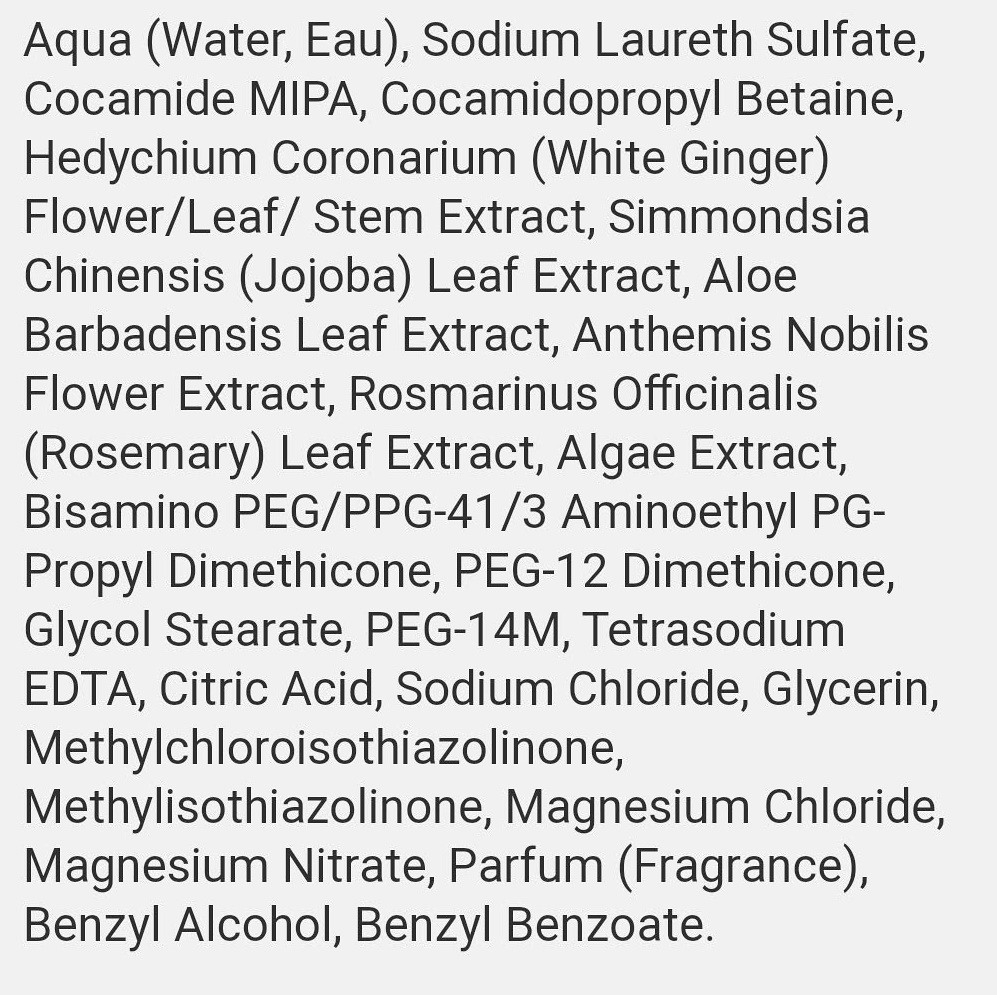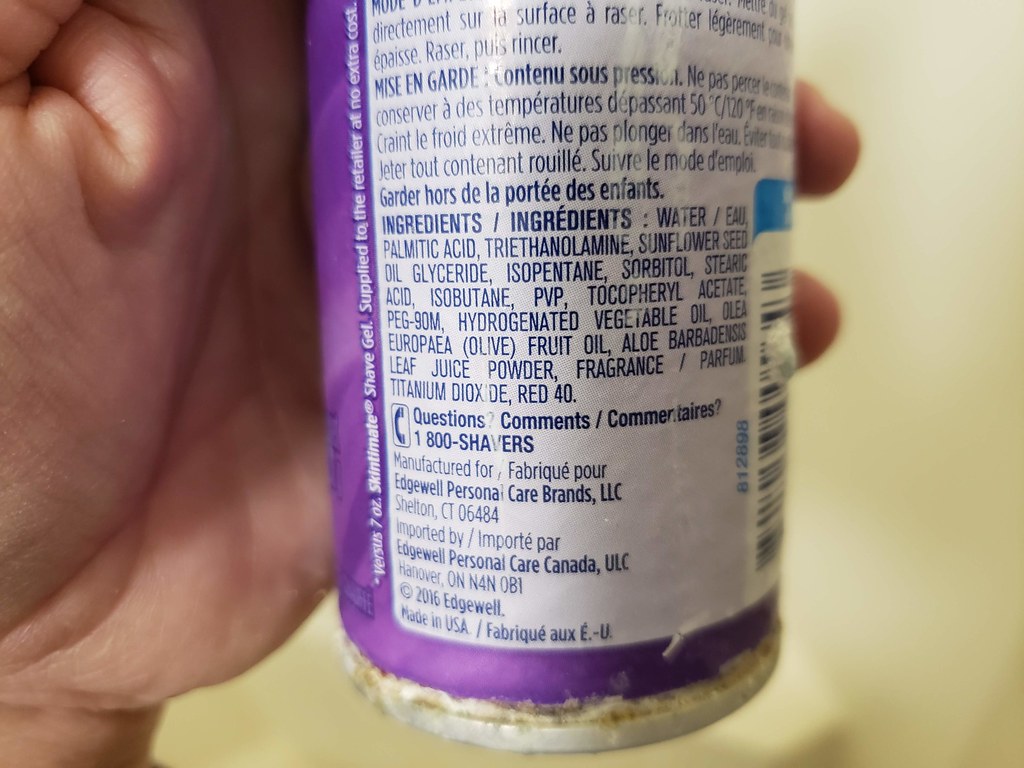Today we have a friend dropping by. He has experience in the formulation of personal care products. I want to ask him about some specific ingredients and what is their purpose in products such as the ones shown below. I started writing about this topic in a previous post.
LOTION / BODY OIL
SHAMPOO / CONDITIONER
FACIAL CLEANSER
SHAVING CREAM
So what I ended up doing is writing a big matrix (table) with all the banned ingredients on the rows and all the products I use on the columns. If the product contained a banned ingredient, I put an "X" in the corresponding box. It made the process of sorting out all the information a lot easier.
The common ingredients I found in some of the lotions I like a lot were parabens. Specifically, methyl-, ethyl-, propyl- and butyl- paraben. The parabens are used as preservatives. They are found in 75-90% of all cosmetics. They are the second most used ingredient (after water). After a 2004 study, it was found that parabens can cause breast cancer due to their ability to function as estrogen-mimics. Some "natural" formulations are using oats, pomegranate, pineapple and ginger instead that achieve the same purpose.
The common ingredients I found in shampoos are quaterniums -7, -10, -15, and -18. The purpose of this ingredient is as a germicide. They have antimicrobial (specifically antibacterial) properties. The reason they are not recommended for pregnancy is that they have been shown to be teratogenic in animal studies. Pregnant mammals gave birth to babies with birth defects if exposed to quaterniums.
An ingredient that is not recommended for pregnant women is diethylamine (DEA). I didn't see that listed in any of the products I looked at, but I did see some analogous chemicals: dimethylamine and triethanolamine. The function of these amines is to act as surfactants. When we spoke to our friend in the business, he mentioned that DEA is no longer widely used. In a 1998 study, products containing DEA were found to be carcinogenic, but the FDA does not consider it harmful.
A second ingredient I found in some of the lotions I like a lot was diazolidinylurea. It is added to cosmetics to function as an antiseptic (preventing the growth of disease-causing microorganisms). The problem with this ingredient is that it releases formaldehyde. The reason formaldehyde is undesirable is that it can lead to abortion, birth defects and premature birth. Formaldehyde is a known carcinogen.
One way I have tried to protect myself against formaldehyde is to put some plants in my bedroom where I sleep that are known to clean the air. One is called "Mother-In-Law's Tongue" and the other is called "Pothos." The botanical names are Sansevieria trifasciata and Epipremnum aureum, respectively. You can see that I put these plants (and several others) in my room just prior to the embryo transfer. Not every plant survived, but the two I just mentioned are still going strong, along with an Aloe vera that is also noted in a NASA study to remove formaldehyde from the air.
There were several compounds that I kept seeing over and over as I read through the ingredients of all the products I use (or wish I could still use). One ingredient is dimethicone, which is a skin protectant that smooths crevices in the skin. It is found in many creams that claim to tighten the skin. A second compound that I saw over and over was phenoxyethanol. It is an oily bactericide.
One interesting story that came up in this research was how in 2008, a French health association criticized the freebies given away in maternity wards at hospitals, characterizing the products distributed as a "toxic cocktail" of baby cosmetics. This led to the health minister requesting a label marking certain products as unsafe for pregnant women and young children, which I believe was unsuccessful due to lobbying by the European trade association. I have a similar story. One of the freebies that I was given either from "Motherhood Maternity" or the "Babylist" registry contained a shampoo and conditioner from the Herbal Essences product line. The shampoo contains quaternium-18, which I found is something that causes birth defects. So even though it's free, it's not right to give it to pregnant women in their first trimester!
In short:
SAFE TO USE
CT Organics Face Wash, Lotion and Deodorant
Clinique Face Washes and Lotions (with SPF)
Burt's Bees Belly Butter and Body Oil
Palmer's Cocoa Butter Stretch Mark Cream
Paul Mitchell Awapuhi Shampoo
Nature's Gate Shampoo and Conditioner
UNSAFE TO USE
C.O.Bigelow Mentha Vitamin Lotion (parabens and diazolidinylurea)
Bath & Body Works Tahiti Sweetie Lotion (parabens and diazolidinylurea)
Gardener's Lotion containing Jojoba Oil (parabens)
Secret Deodorant (aluminum)
Paul Mitchell Tea Tree Shampoo (quaternium)
Herbal Essences Conditioner (dimethylamine, quaternium)
Head & Shoulders 2-in-1 Shampoo and Conditioner (quaternium)
Skintimate Shaving Cream (triethanolamine)
References
Winter, Ruth. A Consumer's Dictionary of Cosmetic Ingredients, 7th Edition: Complete Information About the Harmful and Desirable Ingredients Found in Cosmetics and Cosmeceuticals. Potter/Ten Speed/Harmony/Rodale, 2009.























No comments:
Post a Comment